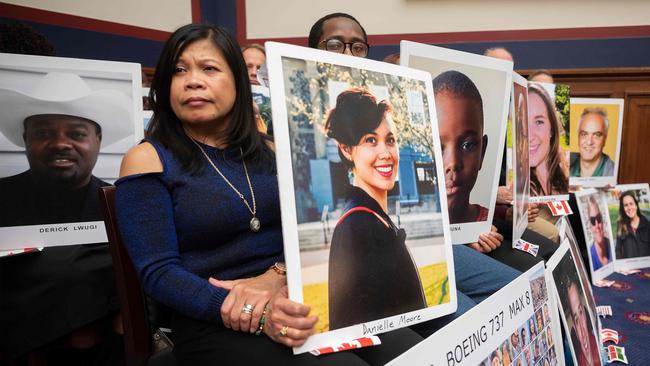Boeing’s failures are laid bare in 737 Max accidents inquiry
A ‘culture of concealment’ at Boeing contributed to two fatal crashes of the 737 Max

A “culture of concealment” at Boeing and a desire to put profits before safety were among the failures that contributed to two fatal crashes of the 737 Max, a US congressional report has concluded.
The crashes were “the horrific culmination of a series of faulty technical assumptions by Boeing’s engineers, a lack of transparency on the part of Boeing’s management and grossly insufficient oversight” by the Federal Aviation Administration, according to the report, which was published late on Wednesday by the US House of Representatives’ transport committee.
The Max fleet has been grounded since March last year after an aircraft operated by Ethiopian Airlines crashed, killing all 157 people on board. In October 2018 a Max operated by Indonesian carrier Lion Air crashed, killing all 189 passengers and crew.
The 238-page report was published at the end of an 18-month investigation into the design, development and certification of the Max. The committee hauled top brass from Boeing and the FAA to Capitol Hill for a series of fractious public hearings and examined 600,000 pages of documents.
The report mixes scathing language with emotive testimony from families of the crash victims. Paul Njoroge, who lost his wife and three children, said: “I have nightmares about how they must have clung to their mother, crying, seeing the fright in her eyes as they sat there helplessly. I miss their laughter, their playfulness, their touch.”
The report says Boeing withheld crucial safety information from regulators and pilots, including details about a new flight control system that contributed to the crashes. Under “tremendous financial pressure” to compete with the Airbus A320neo, Boeing made “extensive efforts to cut costs” in the Max program and thereby “jeopardised the safety of the flying public”.
A string of allegations have been made against Boeing since the crashes, causing significant damage to the reputation and finances of the world’s largest aviation group. Boeing, valued at close to $US250bn before the Lion Air crash, is worth about $US94bn ($129bn) today, having also been hurt by a sharp drop in demand during the pandemic.
The report includes new detail about the safety culture at Boeing during the development of the Max. It says senior managers appeared to ignore warnings from rank-and-file employees about a flight control system known as the manoeuvring characteristics augmentation system. Unique to the Max, the MCAS was intended to counteract the effect of putting larger engines on the 737 airframe. If a sensor reading showed that the aircraft was pitching too far upwards and nearing a stall, the MCAS instructed the tail stabiliser to apply nose-down force.
Faulty readings from a damaged sensor are believed to have contributed to the deadly crashes, causing the MCAS to calculate that the aircraft was nearing a stall and triggering the nose-down action until the pilots ultimately lost control.
Internal communications at Boeing, found by the committee, showed that Boeing engineers had questioned the safety of the MCAS because it was linked to only one sensor. They discussed the risk that a faulty sensor could activate the MCAS and how pilots might not be able to react in time.
In November 2012, Boeing engineers noted that one crew of test pilots had taken four seconds to respond to an MCAS failure, whereas another crew took more than 10 seconds, and judged the episode to be “catastrophic”.
However, as part of the Max certification submitted by Boeing to the FAA, Boeing said pilots should be able to respond to an MCAS failure within four seconds. Boeing also failed to classify the MCAS as a critical safety system, thereby avoiding closer FAA scrutiny, the report says.
Peter DeFazio, Democrat chairman of the committee, said the findings were “disturbing”. “What’s particularly infuriating is how Boeing and FAA both gambled with public safety in the critical time period between the two crashes,” he said.
The Times



To join the conversation, please log in. Don't have an account? Register
Join the conversation, you are commenting as Logout